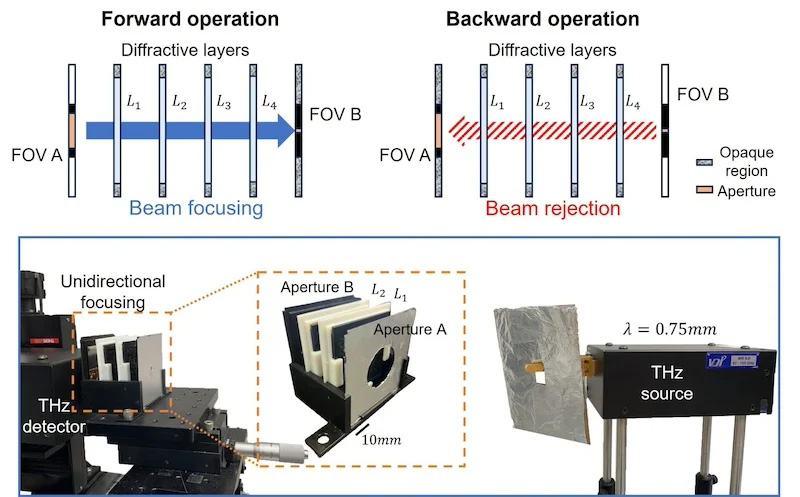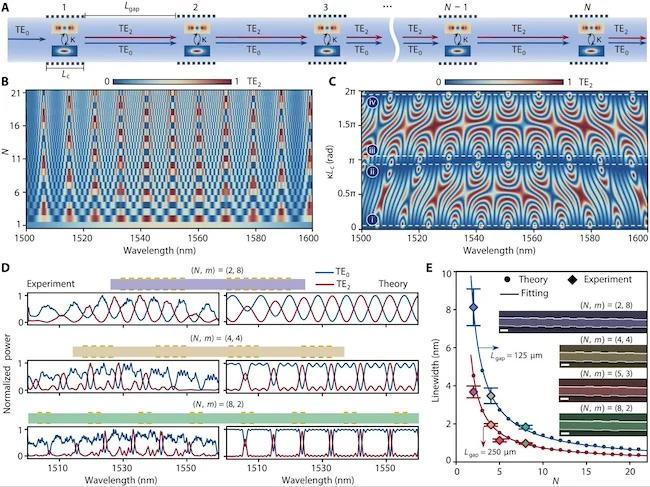MIT, UCLA, and Harvard Discover New Ways to Harvest the Power of Light
Photonics research is pushing the limits of how we generate, control, and transmit light. New work from MIT, UCLA, and Harvard highlights three distinct approaches that solve different technical bottlenecks: quantum connectivity, directional control, and compact light manipulation. These advances lay the groundwork for more scalable, efficient, and integrated optical systems.
Quantum Processor Communication
MIT researchers have built a quantum interconnect that moves single microwave photons between superconducting processors. This allows the processors to share quantum information directly, rather than relying on point-to-point transfers that increase error rates as systems grow. The device uses a superconducting waveguide to shuttle photons in a controlled direction. Each module contains four interface qubits that emit and absorb these photons, which are then passed to nearby data qubits.
The team demonstrated that they could send photons back and forth on demand by shaping microwave pulses to create quantum interference, which determines the direction of travel. To entangle two distant modules, they halted the photon emission pulse midway. This put the system in a state where the photon was both retained and emitted. When the receiving module absorbed that half-photon, the two modules became entangled.

Quantum computers solve complex problems that would be impossible for the most powerful classical supercomputer to crack. Image used courtesy of MIT
Achieving high-fidelity entanglement required clean transmission, but the photons were getting distorted by connections and joints in the waveguide. The team addressed this by training a reinforcement learning algorithm to pre-distort the photons before emission, improving absorption efficiency to over 60%. That was enough to prove successful remote entanglement, marking a significant milestone.
This interconnect architecture supports multiple modules on the same bus, enabling entanglement between any two nodes, not just nearest neighbors. The design offers more flexibility than traditional local-only networks since photons can be sent at different frequencies, times, and directions.
The system is still in development, and the team plans to make it faster and more compact through 3D integration. They also plan to extend it to other quantum platforms. Their goal is to support scalable, modular quantum systems that can be expanded into larger quantum networks and internet frameworks.
Unidirectional Light Control
UCLA researchers have developed a compact optical system that focuses light in only one direction using passive diffractive layers. Traditional unidirectional light control methods rely on nonlinear materials or specialized structures that are complex, expensive, and power-hungry. They’re also sensitive to light polarization and wavelength, which limits real-world use. The UCLA team, led by Professor Aydogan Ozcan, took a different approach. They used deep learning to design isotropic, passive diffractive surfaces that don’t depend on exotic materials or active components. These structures can control light asymmetrically without external modulation or high-power lasers.

Unidirectional light focusing enabled by structured diffractive surfaces. Image used courtesy of UCLA
In their experiments, the team built a two-layer diffractive structure using 3D printing and demonstrated its effectiveness with terahertz radiation. The system allowed light to pass and focus in the forward direction while blocking it in reverse. It worked consistently across a range of wavelengths and didn’t require strict control over the polarization of incoming light. This passive design reduces unwanted reflections and background interference, which is especially useful for systems like biomedical imaging tools, laser machining setups, and precision sensors that can be disrupted by reflected light.
The team sees this as a platform technology. Because it’s scalable and compact, it can be adapted to visible and infrared wavelengths using advanced nanofabrication. It could support next-generation optical communication systems and sensing platforms by offering a low-profile, low-power way to direct light flow. The researchers are now working on expanding its spectral range and pushing its integration into more applications.
Multimodal Light Control
Harvard researchers have developed a new type of interferometer that controls multiple aspects of light—frequency, intensity, and mode—within a single waveguide. This design, called a cascaded-mode interferometer, departs from traditional Mach-Zehnder setups that require splitting light into separate paths. Instead, it uses a nanoscale pattern of gratings etched directly into a silicon-on-insulator waveguide to manage energy exchange between different light modes. This allows the device to shape the light spectrum by controlling how different wavelengths pass through, all without requiring multiple devices in sequence.

A cascaded-mode interferometer with multiple TMCs for precise tuning of FSR and linewidth. Image used courtesy of Harvard
The result is a compact, integrated platform that performs complex light modulation more efficiently than current technologies. Because it doesn’t rely on physical beam-splitting, it offers better performance in a much smaller footprint. This makes it particularly suited to fiber-optic communications, on-chip quantum computing, and advanced sensing systems where space and precision matter. The team also laid out a theoretical model for extending this approach to manipulate many different light modes, which could further enhance its versatility in optical systems.
This device represents a shift in how optical interferometry can be designed for modern applications. Rather than building more components into a system to gain more control over light, the Harvard approach puts everything into a single structure that’s easier to fabricate and integrate. The work opens up opportunities for sharper spectral control, higher signal throughput, and better performance across a range of photonic technologies.
Sign up to our newsletter
Receive our latest updates about our products & promotions
